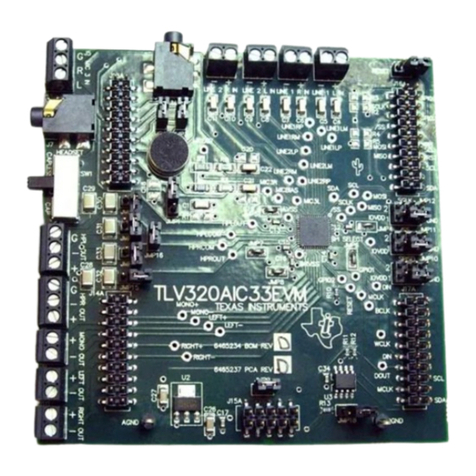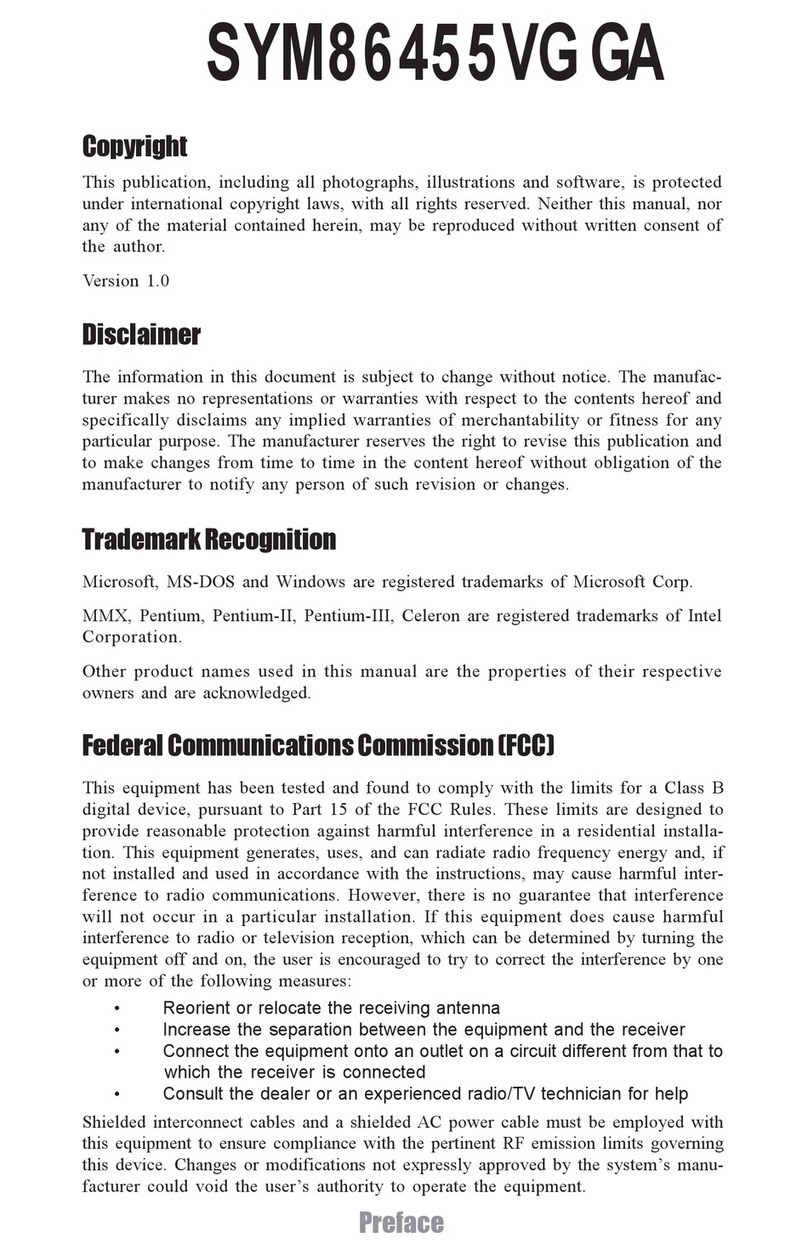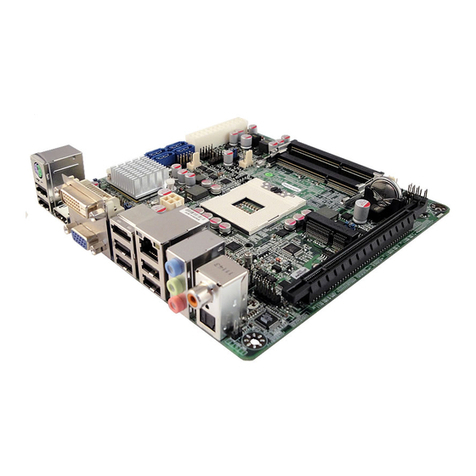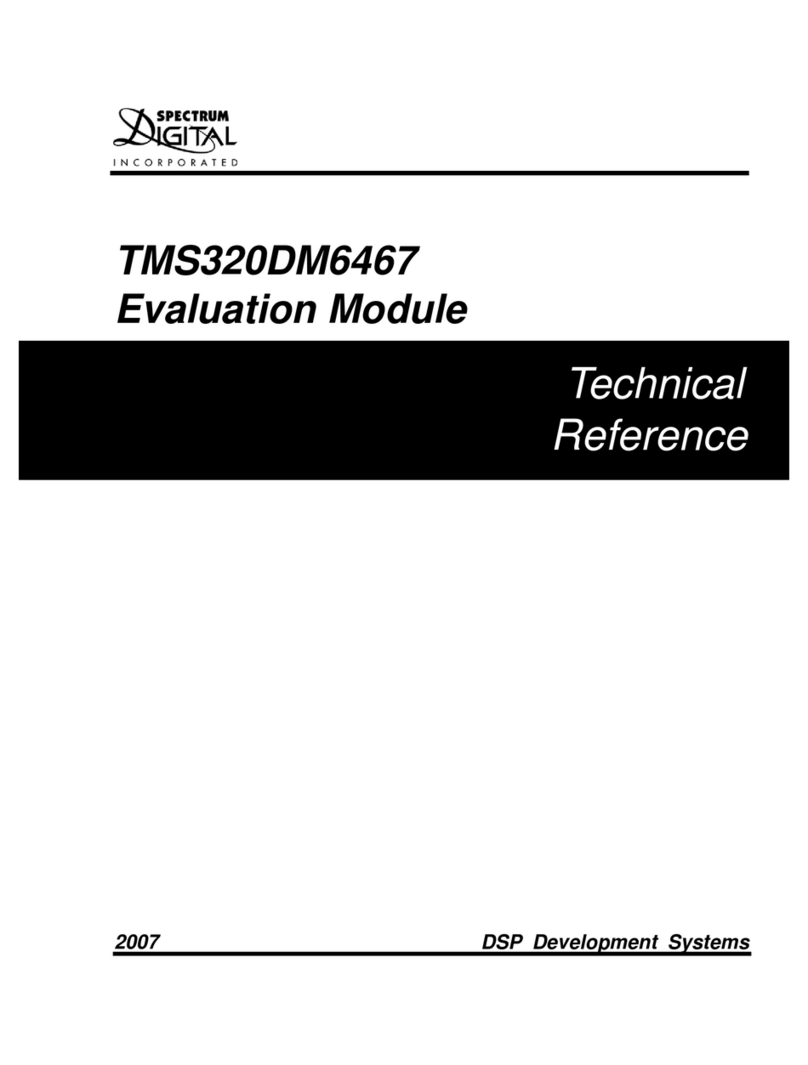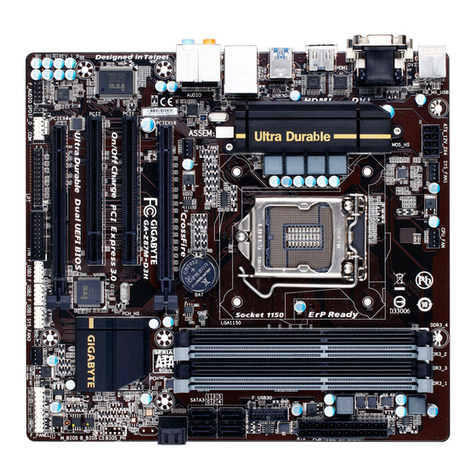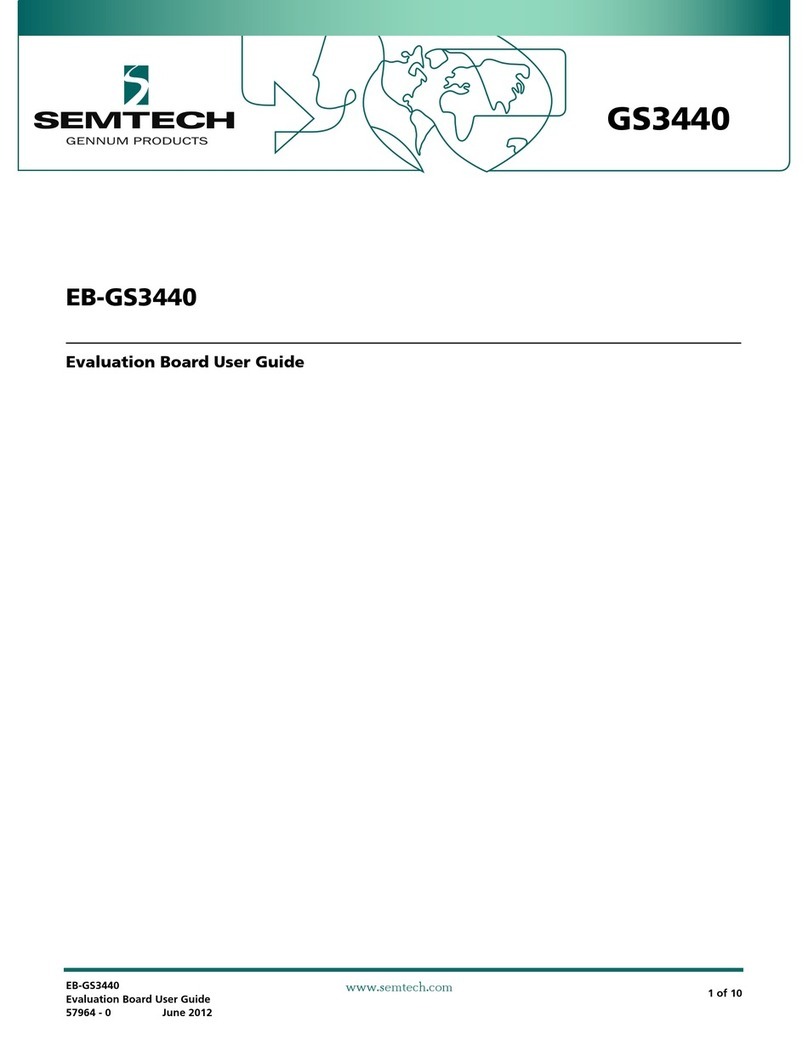Beck IPC@CHIP DB54 User manual

IPC@CHIP DB54
Hardware Manual V1.1 [04.10.2007]
Hardware Manual
IPC@CHIP Development Board
DB54
High Performance IPC@CHIP SC23
Embedded Web Controller
Order No. IPC@CHIP
Development Board DB54:
Development Kit DK55:
553946
553947
©2000-2008 Beck IPC GmbH Page 1 of 24

IPC@CHIP DB54
Hardware Manual V1.1 [04.10.2007]
Copyright & Trademark
IPC@CHIP® is a registered trademark of Beck IPC. Ethernet is a
registered trademark of Xerox Corporation. All other product names,
company names, logos or other symbols referred to herein are trademarks
of their respective owners.
Ethernet is a registered trademark of Xerox Corporation.
SPI is a trademark of Motorola, Inc.
No part of this guide may be reproduced or transmitted in any form for any
purpose whatsoever other than the purchaser's personal use, without the
express written permission of Beck IPC.
Beck IPC GmbH
Grüninger Weg 24
35415 Pohlheim-Garbenteich / Germany
Phone: +49 6404 695-0
Fax: +49 6404 695-500
Technical Support
Phone: +49 6404 695-200
Fax: +49 6404 695-515
Online:
www.beck-ipc.com
E-mail: support@beck-ipc.com
©2000-2008 Beck IPC GmbH Page 2 of 24

IPC@CHIP DB54
Hardware Manual V1.1 [04.10.2007]
Table of Contents
1. OVERVIEW...................................................................................................................................................... 4
1.1 INTRODUCTION .............................................................................................................................................. 4
1.2 ACCESSORIES................................................................................................................................................. 4
1.3 GETTING STARTED......................................................................................................................................... 4
2. BLOCK DIAGRAM......................................................................................................................................... 5
3. PLACEMENT DIAGRAM.............................................................................................................................. 6
4. ELECTRICAL FUNCTIONS / INTERFACES............................................................................................. 7
4.1 POWER SUPPLY............................................................................................................................................... 7
4.2 ST12 &S1 -POWER SUPPLY CONNECTOR...................................................................................................... 7
4.3 SW1 -24V SWITCH........................................................................................................................................ 7
4.4 SW18 -POWER-FAIL BUTTON ........................................................................................................................ 8
4.5 SW19 -RESET BUTTON.................................................................................................................................. 8
4.6 LED’S AND DIP SWITCH ................................................................................................................................8
4.7 LC-DISPLAY .................................................................................................................................................. 9
4.8 S39 -PIN HEADER WITH POWER SUPPLIES .................................................................................................... 10
4.9 IC11 -IPC@CHIP SC23 SOCKET................................................................................................................ 10
4.10 ST23 -IPC@CHIP SC23 PIN HEADER ....................................................................................................... 11
4.11 S9, S31, S32 -WLAN SUPPORTING PIN HEADERS ...................................................................................... 11
4.12 S30 -I2C INTERFACE ................................................................................................................................. 13
4.13 ST15 -RS232 INTERFACE COM1 .............................................................................................................. 13
4.14 S41 -JUMPER ARRAY COM1 ..................................................................................................................... 14
4.15 ST14 -RS232 INTERFACE COM2 .............................................................................................................. 15
4.16 S40 -JUMPER ARRAY COM2 ..................................................................................................................... 15
4.17 S42 -DCD, DTR, DSR CONNECTOR ......................................................................................................... 16
4.18 S32 -SERIAL INTERFACE COM3 /SPI........................................................................................................ 16
4.19 ST1 -SD/MMC INTERFACE ....................................................................................................................... 17
4.20 ST4 -PIO JUMPER ARRAY.......................................................................................................................... 17
4.21 ST3 -ETHERNET INTERFACE ...................................................................................................................... 18
4.22 S6 -CAN0 INTERFACE............................................................................................................................... 18
4.23 S38 -CAN1 (COM2) INTERFACE............................................................................................................... 19
4.24 ST16 &ST13 -USB INTERFACE................................................................................................................ 20
5. TECHNICAL DATA...................................................................................................................................... 22
5.1 CLIMATIC DATA ........................................................................................................................................... 22
5.2 MECHANICAL DATA ..................................................................................................................................... 22
5.3 ELECTROMAGNETIC DATA............................................................................................................................ 22
5.4 ELECTRICAL DATA ....................................................................................................................................... 22
6. GENERAL CONDITIONS OF USE............................................................................................................. 23
6.1 SCOPE OF APPLICATION................................................................................................................................23
7. EXCLUSION OF WARRANTY AND LIABILITY.................................................................................... 23
8. HISTORY........................................................................................................................................................ 24
©2000-2008 Beck IPC GmbH Page 3 of 24

IPC@CHIP DB54
Hardware Manual V1.1 [04.10.2007]
1. Overview
1.1 Introduction
The IPC@CHIP® SC23 Embedded Web Controller has been designed to meet the most common requirements
of embedded products developed for the communication, office automation, mass storage, and general
embedded markets. Specific applications would include industrial controls, data collection, protocol conversion,
process monitoring and Internet connectivity.
The IPC@CHIP® SC1X3 family is a combination of hardware and software including the preinstalled real-time
Operating System, TCP/IP stack, web server, FTP server and Telnet server. It offers increased reliability,
functionality and performance, and considerably reduced time to market, and also enables designers to reduce
the size, power consumption and cost of the embedded system.
The IPC@CHIP® SC23 microcontrollers also integrate the functions of the CPU, two independent timers,
watchdog timer, interrupt controller, DMA controller, three asynchronous serial ports, and programmable I/O pins
on one chip. It also supports the I²C bus and SPI (Serial Peripheral Interface). The USB interface supports user-
specific connections to standard USB hosts like PCs (USB device mode) or memory expansion with USB sticks
(USB host mode).
The DB54 development board is designed to provide an easy introduction to the SC23 technology, both for
software development in C/C++ and in IEC61131. It also provides a hardware basis for quickly developing a
functional prototype for your product. The DB54 can also be expanded easily using a plug-in board.
including a breadboard area for customer-specific extensions
1.2 Accessories
The following accessories are not supplied with the Development Board DB54, but can be ordered separately:
Order number: Accessories:
195837 ZK14 serial programming cable
538934 PSE10 power supply for DB54
541522 Paradigm C/C++ Beck IPC Edition
1.3 Getting Started
The initial commissioning of the DB54 and the software and tools required for this are described in the document
IPC@CHIP® SC123 “Getting Started”. This is available from the Internet at:
http://www.beck-ipc.com/ipc/gettingstarted
This web page also provides links to the required tools as well as other useful documentation (SC1xx Hardware
Manual; RTOS API documentation).
©2000-2008 Beck IPC GmbH Page 4 of 24

IPC@CHIP DB54
Hardware Manual V1.1 [04.10.2007]
2. Block diagram
SC23
GPIO
I2C Port
Expander
COM3/SPI/GPIO
RS232
SPI
USB
MMC/SD-Card
Interface
pinheader/jumper
8 bit OUT
LED's
9..30V DC
pin header
I2C Port
Expander
8 bit IN
switch
pinheader/
jumper
+3V3 / 1A
+5V / 500mA
GPIO
PFI
DSUB female
Power-Fail-Button
DSUB male
5V/500mA
reset
TTL
FK61-WL01
support
Ethernet
9..30V DC
GPIO
CAN
Transceiver
COM2
Serial RS232
Interface
TTL
pin header
CAN0
Alternate DC
Connector
8-bit in-/out port
I2C Port
Expander
USB Host
USB Device
LC-Display
5V
3V3/1A
DC-Connector
DC-Converter
RS232
LED GPIO
TTLRS232
USB-B
TTL
ETH0
100/10 Base T
Reset-Button
TTL
IPC@CHIP
DC-Converter
CAN-Bus
USB-A
pinheader/
jumper
I2C-Bus
RS232
I2C/GPIO
DSUB male
COM1
Serial RS232
Interface
DB54 features are:
•Embedded Web Controller SC23
•9..30V power supply input, protected against
reverse polarity
•Power LED
•3.3V and 5V power supply
•Reset button
•Power-fail button (for power fail emulation)
•3 serial interfaces (of which two with RS232 level)
•2 CAN interfaces (one with CAN transceiver)
•USB interface (host / device)
•SPI interface
•I2C interface
•10/100 Base-T Ethernet interface with
status LEDs
•SD/MMC socket
•8-way LEDs port
•8-way DIP switch
•Expansion pin header
•GPIO pins
•LC-Display
©2000-2008 Beck IPC GmbH Page 5 of 24

IPC@CHIP DB54
Hardware Manual V1.1 [04.10.2007]
3. Component layout diagram
©2000-2008 Beck IPC GmbH Page 6 of 24

IPC@CHIP DB54
Hardware Manual V1.1 [04.10.2007]
4. Electrical Functions / Interfaces
4.1 Power supply
The 24V power supply input of the DB54 is protected against reverse polarity and transient over-voltages. An
operating voltage indication (LD1) is located near the power supply socket. Dimming of the power indication LED
signals reset of the SC23.
A switching controller from the 9...30V DC power supply of the DB54 is used to provide the internal 3.3V power
supply. This voltage is also provided at different pin header for external expansions, the 3.3V switching controller
can supply 600mA for external expansions. In the basic configuration, the maximum internal load of the 3.3V
power supply is 400mA. An additional switching controller provides 5V/500mA from the 24V operating voltage of
the DB54 for the USB host function.
4.2 ST12 & S1 - Power supply connector
Power supply connectors for the DB54
Pin assignment:
Pin No. Designation
1 (pin) 24V DC (9..30V DC)
2 (shield) GND
4.3 SW1 - 24V switch
Switch for the operating voltage of the DB54
Not assembled / optional assignment: e.g. APEM 25136NAH silver ON-ON
If the switch is to be assembled later, the 0 Ohm R13 resistor near the SW1must be removed.
Top view
9..30V DC (pin)
d)
GND (shiel
©2000-2008 Beck IPC GmbH Page 7 of 24

IPC@CHIP DB54
Hardware Manual V1.1 [04.10.2007]
4.4 SW18 - Power-fail button
Pressing the PFI button (SW18) emulates a power-fail event if the Power-fail function is enabled in the SC23, and
calls a power-fail software routine. This routine can write data to the Flash memory area of the SC23. The Power-
fail function must be software-enabled (CHIP.INI or software interrupt). Using the PIO9 function of the PFI/PIO9
signal, the PFI button can also be used as a push-button for input.
4.5 SW19 - Reset button
Power-on reset and the reset button (SW19) generate a low active reset pulse for the SC23 processor.
4.6 LED’s and DIP switch
For digital input and output simulation
The DIP-switch is connected to an I2C I/O port expander (PCF8574A). It is coded to the I2C base
address 72hex. A switch in the ON position will read out logic 0, and a switch in the OFF position will
read out logic 1. Using the I2C port expander it ispossible to have a practical expansion of input and
output signals for the SC23.
switch PCF8574
A
I/O expander
BIT7 D7
BIT6 D6
BIT5 D5
BIT4 D4
BIT3 D3
BIT2 D2
BIT1 D1
BIT0 D0
The LED’s are connected to an I2C I/O port expander (PCF8574A). It is coded to the I2C base
address 70hex. To light up an LED you have to write logic 0 to the corresponding port bit, and to
switch the LED off you need a logic 1 at the port bit.
LED PCF8574
A
I/O expander
BIT7 D7
BIT6 D6
BIT5 D5
BIT4 D4
BIT3 D3
BIT2 D2
BIT1 D1
BIT0 D0
©2000-2008 Beck IPC GmbH Page 8 of 24

IPC@CHIP DB54
Hardware Manual V1.1 [04.10.2007]
A sample program for handling the LED’s and DIP-switch can be obtained from the BECK IPC
website.
4.7 LCD Display
For more complex visualization, a two-row, 16 character dot matrix, LCD (without backlight) with
KS0066 controller/driver is provided on the DB54.
This is an easy way to interface 5V technology and expand the I/O capabilities of the SC23.
The LCD is interfaced to an I2C port expander to the SC23 and uses the 4-bit mode. The I2C address
of the LCD interface is 74hex.
Sample programs for handling the LCD can be obtained from the BECK IPC website.
Pin assignment (Display pins)
Board Pin Display Pin Name
1 14 D7
2 16 D6
3 1 D5
4 2 D4
5 3 D3
6 4 D2
7 5 D1
8 6 D0
9 7 E
10 8 R/W
11 9 RS
12 10 VEE
13 11 VDD
14 12 GND
15 13 LCD_LED_K
16 15 LCD_LED_A
Signal descriptions of the asynchronous serial interface:
Signal name Direction Description
Vss GND
Vdd +5V power supply
Vee Display voltage (contrast)
RS Input Register select
R/W Input
E Input
DB0..DB7 Input/Output
LED_A Backlight LED + (Not assembled)
LED_K Backlight LED - (Not assembled)
©2000-2008 Beck IPC GmbH Page 9 of 24

IPC@CHIP DB54
Hardware Manual V1.1 [04.10.2007]
I2C I/O port expander PCF8574A to LCD assignment:
I2C Port Display Name
D0 LCD_D4 D4
D1 LCD_D5 D5
D2 LCD_D6 D6
D3 LCD_D7 D7
D4 LCD_R/W 1 = read from LCD / 0 = write to LCD
D5 LCD_RS Register select
D6 LCD_E 1 = data enable. LCD reads data with falling edge
D7 LCD_LED (No function) Backlight
4.8 S39 - Pin header with power supplies
This pin header can be used for accommodating all the power supplies of the DB54.
Pin assignment (1x6 pin header, pitch 2.54mm)
Pin No. Name Description
1 +24V (9..30V DC) DB54 board power supply
2 GND
3 +5V 5V power supply for USB host, CAN
4 VCC_USB_DEVICE Voltage input of USB Device Interface
5 +3.3V 3.3V logic voltage
6 GND
4.9 IC11 - IPC@CHIP SC23 Socket
Socket for the IPC@CHIP SC23 module
The SC23 is described in the SC2x Hardware Manual
Pin assignment (32 pin IC socket)
Pin No. Name Description Pin No.
1 RXD1 PFI/PIO9 32
2 TXD1 TMRIN1/INT5#/PIO0 31
3 CTS1#/PIO12 TMROUT1/INT3/PIO1 30
4 RTS1 TMROUT0/PIO10 29
5 TXD2/PIO22 TMRIN0/PIO11 28
6 RXD2/PIO23 INT1/PIO2 27
7 CTS2#/CAN1RX/PIO12 RESETOUT# 26
8 RTS2#/CAN1TX/PIO20 I2CCLK/PIO31 25
9 RXD3/SDI/PIO28 I2CSDA/PIO13 24
10 TXD3/SDO/PIO27 CAN0RX 23
11 RTS3#/SCK/PIO19 CAN0TX 22
©2000-2008 Beck IPC GmbH Page 10 of 24

IPC@CHIP DB54
Hardware Manual V1.1 [04.10.2007]
12 CTS3/SEL/PIO18 TPRX- 21
13 USBP TPRX+ 20
14 USBN TPTX- 19
15 3V3 TPTX+ 18
16 GND RESETIN#/TRAFFIC 17
4.10 ST23 - IPC@CHIP SC23 pin header
Pin header for SC23 expansion or measurement.
To avoid low Ethernet quality, the Ethernet signals are not connected to this pin header.
Pin assignment (2x17 pin header, pitch 2.54mm)
Pin No. Name Description Pin No.
1 RXD1 PFI/PIO9 34
2 TXD1 TMRIN1/INT5#/PIO0 33
3 CTS1#/PIO12 TMROUT1/INT3/PIO1 32
4 RTS1 TMROUT0/PIO10 31
5 TXD2/PIO22 TMRIN0/PIO11 30
6 RXD2/PIO23 INT1/PIO2 29
7 CTS2#/CAN1RX/PIO12 RESETOUT# 28
8 RTS2#/CAN1TX/PIO20 I2CCLK/PIO31 27
9 RXD3/SDI/PIO28 I2CSDA/PIO13 26
10 TXD3/SDO/PIO27 CAN0RX 25
11 RTS3#/SCK/PIO19 CAN0TX 24
12 CTS3/SEL/PIO18 NC 23
13 USBP NC 22
14 USBN NC 21
15 3V3 NC 20
16 GND RESETIN#/TRAFFIC 19
17 NC NC 18
4.11 S9, S31, S32 - WLAN supporting pin headers
The S9 pin header in conjunction with S31 and S32 supports the usability of the FK61-WL01 WLAN
module with the DB54 Board. The FK61-WL01 WLAN module uses the SPI interface at S32 and three
PIO pins at S9. To allow WLAN and SD/MMC to coexist at the SPI bus, the WLAN interface uses a
different SPI slave select signal (PIO12 / CTS1), so the CTS1 jumper must be removed from S41 for
the use of the FK61-WL01 module.
©2000-2008 Beck IPC GmbH Page 11 of 24

IPC@CHIP DB54
Hardware Manual V1.1 [04.10.2007]
Pin assignment of S9 (2x20 pin header, pitch 2.54mm):
Pin No. Name Description Pin No.
1 VCC (+3.3V) NC 2
3 GND NC 4
5 NC NC 6
7 Reserved NC 8
9 Reserved NC 10
11 Reserved NC 12
13 NC NC 14
15 NC NC 16
17 WLAN_INT# NC 18
19 NC NC 20
21 NC NC 22
23 NC NC 24
25 NC NC 26
27 NC NC 28
29 NC NC 30
31 NC NC 32
33 NC NC 34
35 WLAN_SEL# NC 36
37 WLAN_RES# NC 38
39 NC NC 40
Signal descriptions of the expansion interface:
Signal name Direction Description
WLAN_INT# Input INT5# (PIO0 / TMRIN1)
WLAN_SEL# Output PIO12 (CTS1)
WLAN_RES# Output PIO2 (INT1)
WLAN SPI Connector
Pin assignment (1x6 pin header, pitch 2.54mm)
Pin No. Name
1 VCC
2 GND
3 SDO (TXD3 / PIO27)
4 SDI (RXD3 / PIO28)
5 PIO12 (CTS1)
6 SCK (RTS3 / PIO19)
©2000-2008 Beck IPC GmbH Page 12 of 24

IPC@CHIP DB54
Hardware Manual V1.1 [04.10.2007]
Signal descriptions:
Signal name Direction Description
TXD3
PIO27
SDO
Output
Bi-directional
Output
Serial data Transmit line. TTL level
PIO27
SDO (serial data out)
SC23 as SPI master: MOSI
SC23 as SPI slave: MISO
RXD3
PIO28
SDI
Input
Bi-directional
Input
Serial data Receive line. TTL level
PIO28
SDI (serial data in)
SC23 as SPI master: MISO
SC23 as SPI slave: MOSI
PIO12
CTS1 Bi-directional
Input SPI Slave Select
Handshake line. Clear To Send. TTL level
RTS3
PIO19
SCK
Output
Bi-directional
Output
Handshake line. Request To Send. TTL level
PIO19
SPI clock
VCC 3.3 power supply
(e.g. for externally connected level converter)
GND GND, Signal reference
4.12 S30 - I2C Interface
Alternatively PIO signals can also be configured on the signals of the I2C interface.
1 K Ohm pull-up resistors are connected on SDA and SCL
Pin assignment (pin header pitch 2.54mm):
Pin No. Name
1 VCC
2 GND
3 I2CSDA (P13)
4 I2CCLK (P31)
5 NC
6 NC
Signal descriptions of the I2C interface:
Signal name Direction Description
I2CDTA
P13 Bi-directional
Bi-directional Serial data
PIO13
I2CCLK
P31 Output
Bi-directional Clock
PIO31
VCC 3.3V power supply for externally connected
expansion
GND Signal reference
4.13 ST15 - RS232 interface COM1
Asynchronous serial interface with RS232 / V24 level and transfer rates up to max. 115200 baud.
©2000-2008 Beck IPC GmbH Page 13 of 24

IPC@CHIP DB54
Hardware Manual V1.1 [04.10.2007]
The default function of this interface is the terminal interface (19200 baud, lines used: TXD, RXD)
This interface can also be used for RTOS update (Interface settings for RTOS update 115 KBaud,
lines used: TXD, RXD)
Pin assignment (D-SUB 9-pole male connector):
Pin No. Name
1 NC
2 RXD1
3 TXD1
4 NC
5 GND
6 NC
7 RTS1
8 CTS1 (PIO12)
9 NC
Signal descriptions of the asynchronous serial interface:
Signal name Direction Description
TXD1 Output Serial data Transmit line. RS232/V24 level
RXD1 Input Serial data Receive line. RS232/V24 level
CTS1 Input Handshake line. Clear To Send. RS232/V24 level
RTS1 Output Handshake line. Request To Send. RS232/V24 level
GND GND, Signal reference
4.14 S41 - Jumper array COM1
A jumper placed at this pin header allows the serial interfaces of the SC23 to be used with an RS232
level. Removing the jumpers allows the serial signals to be used directly as TTL levels e.g. for RS485
driver.
Pin assignment (2x8 pin header, pitch 2.54mm)
Pin No. Name Description Pin No.
1 NC VCC (3.3V) 2
3 NC GND 4
5 TXD1 to RS232 level converter TXD1-TTL 6
7 RXD1 from RS232 level converter RXD1-TTL 8
9 CTS1 from RS232 level converter CTS1-TTL (PIO12) 10
11 RTS1 to RS232 level converter RTS1-TTL 12
13 NC NC 14
15 NC NC 16
©2000-2008 Beck IPC GmbH Page 14 of 24

IPC@CHIP DB54
Hardware Manual V1.1 [04.10.2007]
4.15 ST14 - RS232 Interface COM2
Asynchronous serial interface with RS232 / V24 level and transfer rates up to max. 115200 baud.
Two jumpers at S42 can be used to connect pins 1, 4 and 6 (DCD, DTR, DSR) of the DSUB plug
(required for modem connections). These signals are not functionally connected with the SC23.
The RTS2 and CTS2 signals are shared with the CAN signals CAN1TX and CAN1RX.
Pin assignment (DSUB 9-pole male connector)
Pin No. Name
1 DCD
2 RXD2
3 TXD2
4 DTR
5 GND
6 DSR
7 RTS2
8 CTS2
9 NC (RI)
Signal descriptions of the asynchronous serial interface:
Signal name Direction Description
TXD2 Output Serial data Transmit line. RS232/V24 level
RXD2 Input Serial data Receive line. RS232/V24 level
CTS2 Input Handshake line. Clear To Send. RS232/V24 level
RTS2 Output Handshake line. Request To Send. RS232/V24 level
DCD No function, connected to S42
DTR No function, connected to S42
DSR No function, connected to S42
GND GND, Signal reference
4.16 S40 - Jumper array COM2
This jumper array allows the serial interfaces of the SC23 to be used with an RS232 level. Removing
the jumpers allows the serial signals to be used directly as TTL levels e.g. for RS485 driver. The RTS2
and CTS2 signals are shared with the CAN signals CAN1TX and CAN1RX.
Pin assignment (2x8 pin header, pitch 2.54mm)
Pin No. Name Description Pin No.
1 NC VCC (3.3V) 2
3 NC GND 4
5 TXD2 to RS232 level converter TXD2-TTL (PIO22) 6
7 RXD2 from RS232 level converter RXD2-TTL (PIO23) 8
9 CTS2 from RS232 level converter CTS2-TTL (CAN1RX / PIO21) 10
11 RTS2 to RS232 level converter RTS2-TTL (CAN1TX / PIO20) 12
13 NC NC 14
15 NC NC 16
©2000-2008 Beck IPC GmbH Page 15 of 24

IPC@CHIP DB54
Hardware Manual V1.1 [04.10.2007]
4.17 S42 - DCD, DTR, DSR Connector
This pin header is required for modem connections at COM2. With two jumpers it can connect pins 1,
4 and 6 (DCD, DTR, DSR) of the DSUB plug ST14 (COM2).
Pin assignment (1x6 pin header, 2.54mm pitch):
Pin No. Name
1 DCD (can be bridged via jumper with DTR)
2 DTR (can be bridged via jumper with DCD) ] Jumper
3 DTR (can be bridged via jumper with DSR)
4 DSR (can be bridged via jumper with DTR) ] Jumper
5 NC
6 NC
4.18 S3 - Serial interface COM3 / SPI
Asynchronous serial interface and synchronous serial interface with TTL signal level. The COM3
interface can also be used alternatively as an SPI interface or as a PIO function.
4.7k Ohm pull-up resistors at SDO and SDI enable the SPI interface to run in slave mode.
Pin assignment (1x3 pin header, pitch 2.54mm)
Pin No. Name
1 VCC
2 GND
3 TXD3/SDO/P27
4 RXD3/SDI/P28
5 CTS3/SEL/P18
6 RTS3/SCK/P19
Signal descriptions:
Signal name Direction Description
TXD3
P27
SDO
Output
Bi-directional
Output
Serial data Transmit line. TTL level
PIO27
SDO (serial data out)
SC23 as SPI master: MOSI
SC23 as SPI slave: MISO
RXD3
P28
SDI
Input
Bi-directional
Input
Serial data Receive line. TTL level
PIO28
SDI (serial data in)
SC23 as SPI master: MISO
SC23 as SPI slave: MOSI
CTS3
P18
SEL
Input
Bi-directional
Output
Handshake line. Clear To Send. TTL level
PIO18
Device Select
RTS3
P19
SCK
Output
Bi-directional
Output
Handshake line. Request To Send. TTL level
PIO19
SPI clock
VCC 3.3 power supply
(e.g. for externally connected level converter)
GND GND, Signal reference
©2000-2008 Beck IPC GmbH Page 16 of 24

IPC@CHIP DB54
Hardware Manual V1.1 [04.10.2007]
4.19 ST1 - SD/MMC interface
The SD/MMC interface uses the SPI interface of the SC23.
As several devices can be connected to the SPI interface, a PIO signal is required as a device-select
signal (SPI slave select, SEL) for each SPI device. The device-select signals are configured via the
software. PIO18 is reserved as the device-select signal for the SD/MMC interface on the DB54. The
appropriate MMC/SD driver must be installed in order to use the SD/MMC interface. This driver can be
obtained from the BECK IPC GmbH website.
Pin assignment of the SD/MMC connector:
Pin No. Name
1 SLVSEL# (CTS3/PIO18)
2 SDO (TXD3/PIO27)
3 GND
4 +3,3V
5 SCK (RTS3/PIO19)
6 GND
7 SDI (RXD3/PIO28)
8 GND
9 NC
10 WP (PIO10)
11 CD (PIO11)
12 COMMON (GND)
13 GND (shield)
14 NC
Signal descriptions of the SD/MMC interface:
Signal name Direction Description
SDO Output Serial synchronous data output
SDI Input Serial synchronous data input
SLVSEL# Output SPI Slave Select
SCK Output SPI clock
CD (PIO11) Input Card Detect: 0 = Card present
1 = Card not present
WP (PIO10) Input Write Protect: 0 = unlocked
1 = locked
VCC 3.3V power supply
GND GND, Signal reference
4.20 ST4 - PIO Jumper array
This jumper array is used to disable DB54 functions if the corresponding PIO should be used for other
purposes.
Pin assignment (2x8 pin header, pitch 2.54mm)
Pin No. Name Description Pin No.
1 PIO12 (CTS1) WLAN_SELECT# 2
3 PIO2 (INT1) WLAN_RESET 4
5 PIO1 (TMROUT1 / INT3) LED (at ST3 Ethernet Jack) 6
©2000-2008 Beck IPC GmbH Page 17 of 24

IPC@CHIP DB54
Hardware Manual V1.1 [04.10.2007]
7 PIO0 (TMRIN1 / INT5#) WLAN_INT# 8
9 PIO10 (TMROUT0) SD/MMC_WP 10
11 PIO11 (TMRIN0) SD/MMC_CD 12
13 NC NC 14
15 NC NC 16
4.21 ST3 - Ethernet Interface
10/100 Base-T Ethernet interface
Activity of the Ethernet interface is indicated by the orange LEDs that are lit up by the SC23. The other
green LED is connected to a PIO of the SC23 and is freely programmable.
Assignment of the RJ45 Ethernet connector:
Pin No. Name
1 TPTX+
2 TPTX-
3 TPRX+
4 NC
5 NC
6 TPRX-
7 NC
8 NC
Signal descriptions of the Ethernet interface:
Signal name Direction Description
TPTX+ Output Differential 10/100 Base T transmit signal from SC23
TPTX- Output Differential 10/100 Base T transmit signal from SC23
TPRX+ Input Differential 10/100 Base T receive signal from SC23
TPRX- Input Differential 10/100 Base T receive signal from SC23
Ethernet Jack with integrated LED’s:
RJ45 Ethernet Jack LED Description
green LED
(right side) TMROUT0/PIO1
Activity Status
orange LED
(left side)
On: activity
Off: no activity
4.22 S6 - CAN0 Interface
The CAN0 interface is equipped with a CAN transceiver module and is not isolated. A 120-Ohm
terminating resistor (R22) is provided between the CANLOW and CANHIGH signal (DSUB 9 female).
Additionally it is possible to connect the power supply to pin 9 of the DSUB connector S6 by placing a
0 Ohm resistor at R10. #
©2000-2008 Beck IPC GmbH Page 18 of 24

IPC@CHIP DB54
Hardware Manual V1.1 [04.10.2007]
Pin assignment (2x8 pin header, pitch 2.54mm)
Pin No. Name
1 NC
2 CANLOW
3 GND
4 NC
5 CAN_SHLD
6 NC
7 CANHIGH
8 NC
9 NC
Signal descriptions of the CAN interface:
Signal name Direction Description
CAN_LOW Bi-directional Differential CAN Signal
CAN_HIGH Bi-directional Differential CAN signal
CAN_SHLD Shielding of the CAN socket
4.23 S38 - CAN1 (COM2) Interface
The second CAN interface is not provided with a CAN transceiver. 3.3 V and 5V are provided on the
pin header for expansion with a CAN transceiver. Alternatively, the signal lines of the CAN1 interface
can also be used as PIO functions. The CAN1TX and CAN1RX signals are shared with the signals
RTS2 and CTS2.
Pin assignment (pin header 6-pole, pitch 2.54mm):
Pin No. Name
1 VCC
2 GND
3 CAN1T (CTS2/PIO20)
4 CAN1R (RTS2/PIO21)
5 NC
6 5V
Signal descriptions of the CAN interface:
Signal name Direction Description
CAN_TXD
PIO20
CTS2
Bi-directional
Bi-directional
Input
Differential CAN signal
PIO20
Handshake signal. Clear To Send. TTL level
CAN_HIGH
PIO21
RTS2
Bi-directional
Bi-directional
Out
p
ut
Differential CAN signal
PIO21
Handshake si
g
nal. Re
q
uest To Send. TTL level
VCC 3.3V power supply for external expansions
5V 5V power supply for external expansions
©2000-2008 Beck IPC GmbH Page 19 of 24

IPC@CHIP DB54
Hardware Manual V1.1 [04.10.2007]
GND Signal reference
Example of galvanic isolation of the CAN interface:
CAN_RXD
R19
1k
CAN_GND
CAN_GND
GND
VCC
CAN_GND
U20
DC/DC converter
1
2 4
6
+Vin
-Vin -Vout
+Vout
P1
D-SUB-9m
5
9
4
8
3
7
2
6
1
R7
1k
CAN_VCC
GND
+5V +5V
R15
390R
CAN_TXD
CAN_VCC
C16
100n
CAN_VCC
CAN
P2
D-SUB-9f
5
9
4
8
3
7
2
6
ISO2
6N135
1
2 8
35
6
7
CAN_GND
CAN_GND
CAN
CAN_GND
VCC
R28
390R
CAN_GND
ISO1
6N135 2
3
5
6
7
8
IC1
82C250
3
TXD
RXD
REF
RS
CANL
CANH
GND VCC
CAN_SHLD
1 7
4 6
5
8
2
VCC
Example of the CAN interface without galvanic isolation:
IC1
SN65HVD231
1
4
5 8
6
7
2 3
TXD
RXD
REF RS
CANL
CANH
GND VCC
CANH
3V3
GND
+
C2
10uF
CANTX
CAN
CANRX
CANL
P2
D-SUB-9f
5
9
4
8
3
7
2
6
1
NC
5V
CAN1
S38
1
2
3
4
5
6
C1
100uF
CAN_GND
GND
4.24 ST16 & ST13 - USB Interface
The USB interface of the DB54 has the ability to work in host or device mode. A software driver is
needed to use the USB, which can be obtained from the BECK IPC GmbH website. It is not possible
to operate the USB in host mode and device mode at the same time.
ST16 USB host Pin assignment (USB-A connector)
Pin No. Name
1 5V
2 USBN
3 USBP
4 GND
©2000-2008 Beck IPC GmbH Page 20 of 24
Table of contents
Popular Motherboard manuals by other brands
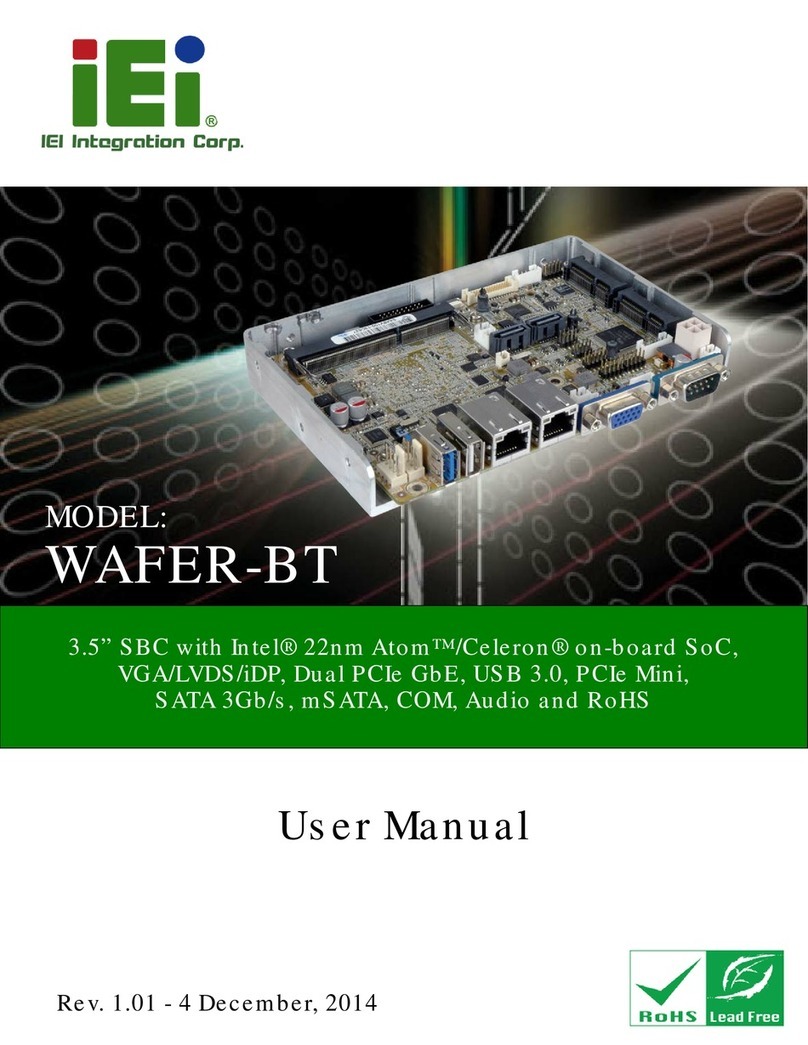
IEI Technology
IEI Technology WAFER-BT user manual
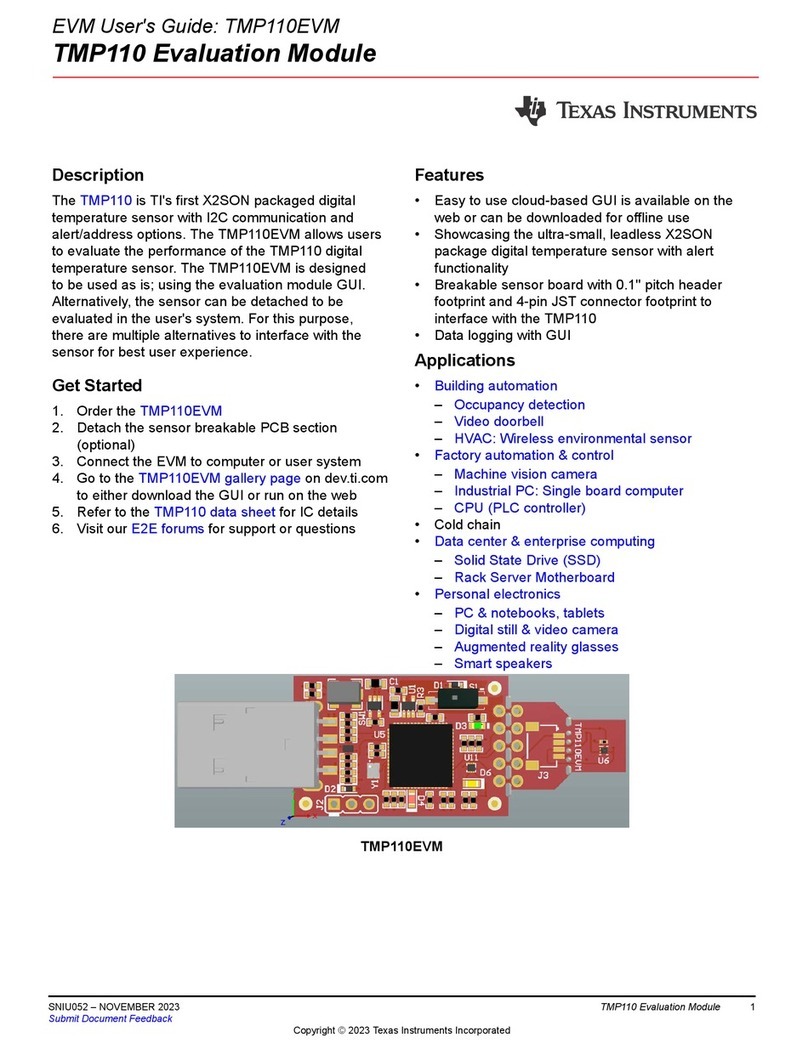
Texas Instruments
Texas Instruments TMP110 user guide
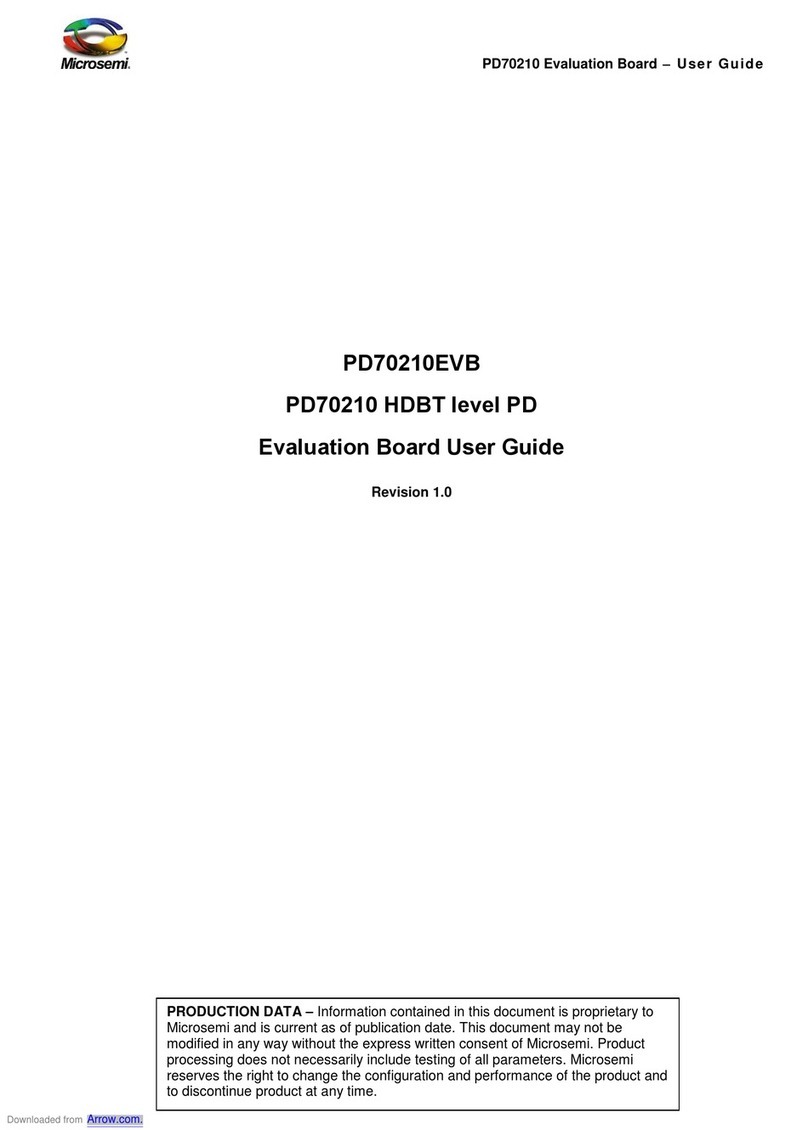
Microsemi
Microsemi PD70210EVB user guide
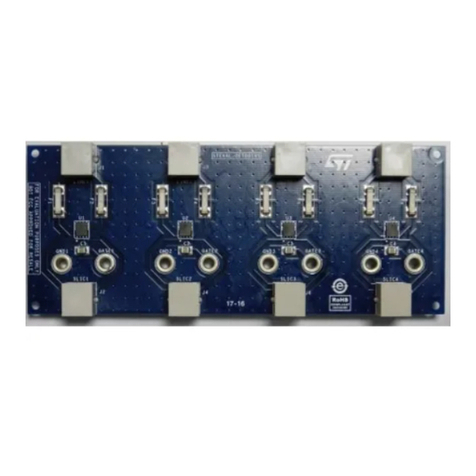
ST
ST STEVAL-OET001V1 user manual

Anix Technology Corporation
Anix Technology Corporation CH-386S-16 user manual
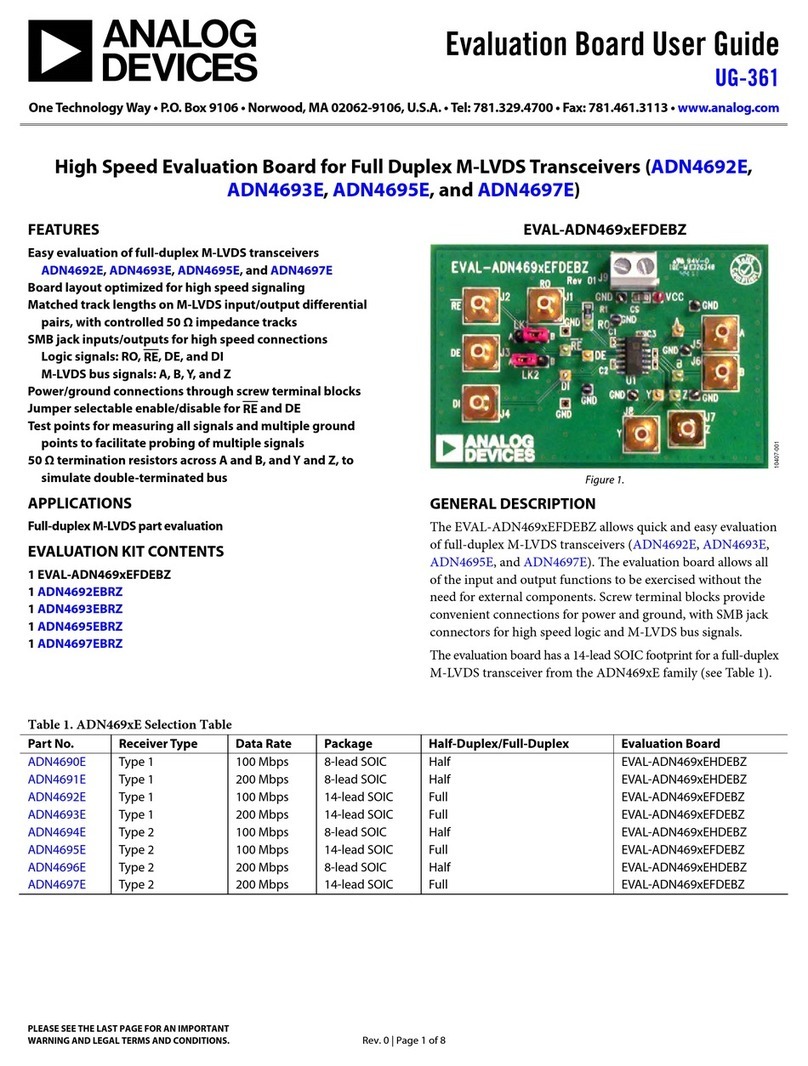
Analog Devices
Analog Devices EVAL-ADN469xEFDEBZ user guide
